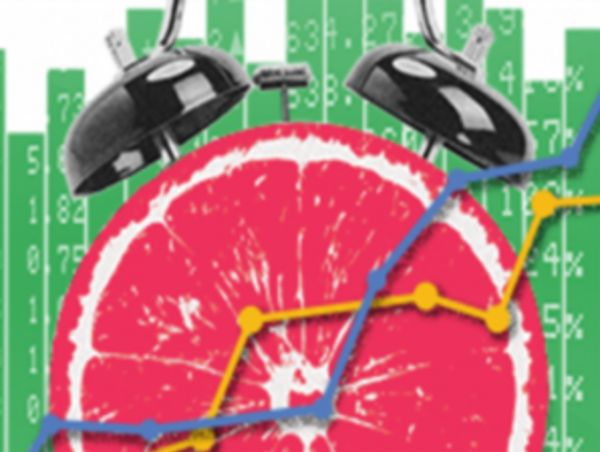The ability of US companies to hire and fire employees at relatively little cost gives them an advantage during periods of increased instability.
Last week, we cited Amazon and Google’s layoffs as evidence they overinvested during the pandemic. However, the fact they could unwind these decisions so promptly could be seen as a strength. Companies that can quickly respond to the increasingly volatile world will prosper most.
Even before the pandemic, the future was tricky to forecast. As this interactive graph shows, the market has been consistently bad at predicting future interest rates. During the 2010s the market refused to believe there had been a post-recession transition to a structurally lower inflation world, meaning it consistently predicted rates to be higher than they proved to be.
This was particularly bad given it was one of the most stable periods in history. All the market had to do was forecast no change over the next decade and it would have been right.
Now with wars being waged in Europe and the Middle East, plus some of the extreme effects of the pandemic being worked through, the one forecast that can be made with some confidence is that inflation in the 2020s and 2030s will be more volatile than the unprecedently stable last decade.
Large global events rarely resolve themselves quietly. The Black Death is one of the most extreme examples of an exogenous shock and, as covered before by the Squeeze, the plague had a radical impact on wages and inflation over the next decades. Between 1346 and 1351, almost half of the UK population was killed according to data compiled by the Bank of England going back a millennium.
The initial impact was a reduction in the supply of food, which might have been a reaction to less demand, but also with fewer workers, it was impossible to plant as many crops. In 1346 wheat production dropped 32 per cent to 15 million bushels and by 1350, the total was just 9 million. The impact of this was to push up farm wages. Between 1346 and 1352, the average farm wage more than doubled. This spike in wage inflation coupled with the lost crops meant that the cost of living, to use modern terminology, rose 64 per cent.
However, a problem for landowners arose in 1376 when there was a bumper harvest due to favourable weather conditions. That year 17 million bushels of wheat were produced, more than double the previous year and the most since before the plague. Increased supply pushed down the price of food but with wages stuck higher, the landowners' profit margins collapsed.
This is a cautionary tale to UK companies. A reduction in the labour supply has meant real wages were up 1.4 per cent year-on-year in November. In other words, on average people’s salaries increased faster than inflation.
The problem for companies is that wages are sticky. Workers demand pay rises when there is inflation but rarely accept a pay cut when the economy slows, and strict labour laws exasperate this. Even if there is a chance to increase productivity and boost margins with new technology, like AI, the legal costs of mass redundancies would undermine the profitability benefits in the near term.
This is where US companies have an advantage, they can adjust their labour forces at minimal cost. And within the US, it is those with strong balance sheets and relatively low fixed costs that will be best placed to flex in a changing world.
When ranking the S&P 500 companies on net cash, profitability and five-year average operating margins, the list is dominated by tech. Microsoft, Visa and Meta occupy the top three spots, with Alphabet fifth, Cisco sixth and Adobe tenth. Consumer companies that sit highest are those with strong brands that enable them to charge higher prices, such as Coca-Cola in 48th and Monster Energy 59th. Meanwhile, semiconductor companies Nvidia, Qualcomm and Broadcom are also high on the list.
In a world where the only thing we can predict with certainty is things will change, it is worth paying up for the companies that are best placed to adapt.







